Lukas Georgieff & Alberto Gisbert
Slip Through the Boundaries of Legacy Systems with Kotlin and Spring WebFlux
#1about 5 minutes
Building efficient services for legacy system environments
Traditional synchronous architectures struggle with slow legacy systems, creating a need for more resource-efficient reactive approaches.
#2about 5 minutes
Comparing WebFlux and MVC performance under memory constraints
A load test demonstrates that Spring WebFlux handles ten times more requests than Spring MVC with the same limited memory, highlighting its superior efficiency.
#3about 11 minutes
Exploring asynchronous I/O with the publisher model
The core of reactive programming is the publisher model, which avoids blocking threads by using asynchronous I/O and callbacks instead of waiting for data.
#4about 11 minutes
Managing data flow with backpressure and reactive streams
Backpressure combines pull and push models to prevent overwhelming consumers, a core concept formalized by the Reactive Streams specification.
#5about 3 minutes
Implementing reactive streams with Project Reactor's Mono and Flux
Project Reactor provides concrete publisher types like Mono for 0-1 items and Flux for N items, along with a rich set of operators for manipulating data streams.
#6about 4 minutes
How to effectively test reactive publishers
The StepVerifier class in Project Reactor provides a robust way to test asynchronous code by verifying emitted signals, data, and completion states over time.
#7about 6 minutes
Avoiding common pitfalls with nulls and empty publishers
Reactive streams do not permit null values, and empty publishers can cause silent failures in operators like zip, requiring careful handling.
#8about 3 minutes
Understanding assembly time versus subscription time
Failing to distinguish between when a reactive pipeline is defined (assembly time) and when it executes (subscription time) can lead to unexpected eager evaluations.
#9about 4 minutes
Navigating the complexities of caching reactive streams
Standard caching annotations cache the "cold" publisher definition, not the result, requiring the use of operators like .cache() to create a "hot" source that replays the value.
Related jobs
Jobs that call for the skills explored in this talk.
Java / Kotlin Developer in einem Cloud-Native-Stack
PROSOZ Herten GmbH
Herten, Germany
Intermediate
Senior
Matching moments
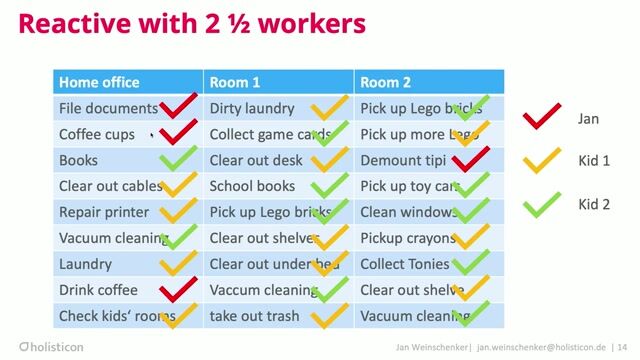
11:08 MIN
Exploring reactive Java frameworks and adoption challenges
Side-by-Side: Reactive vs non-reactive Java
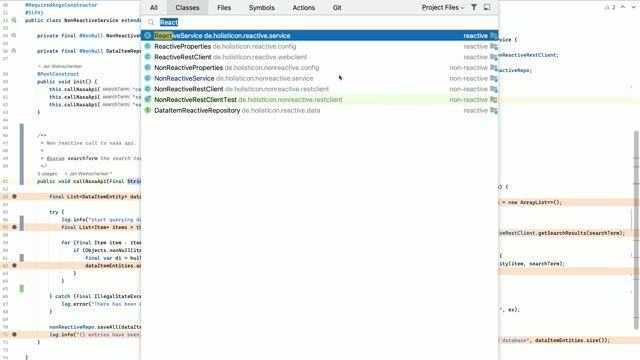
16:35 MIN
Live code demonstration of reactive Java
Side-by-Side: Reactive vs non-reactive Java
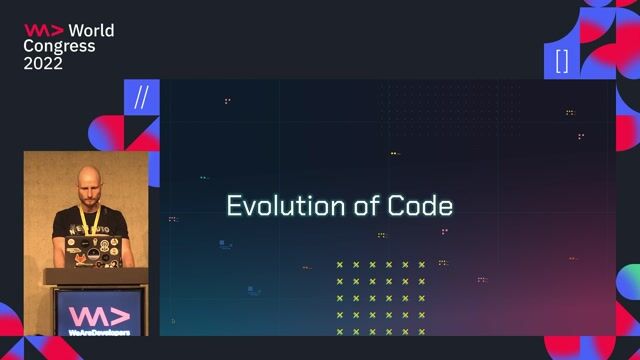
05:05 MIN
Moving from blocking to non-blocking with Spring WebFlux
Back(end) to the Future: Embracing the continuous Evolution of Infrastructure and Code
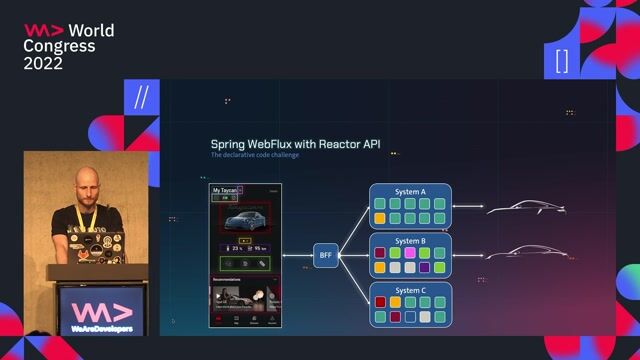
09:38 MIN
Using Kotlin Coroutines to simplify complex reactive code
Back(end) to the Future: Embracing the continuous Evolution of Infrastructure and Code

43:46 MIN
Q&A on virtual threads, reactive programming, and Java 21
Introduction and pitfalls of Java's new concurrency model
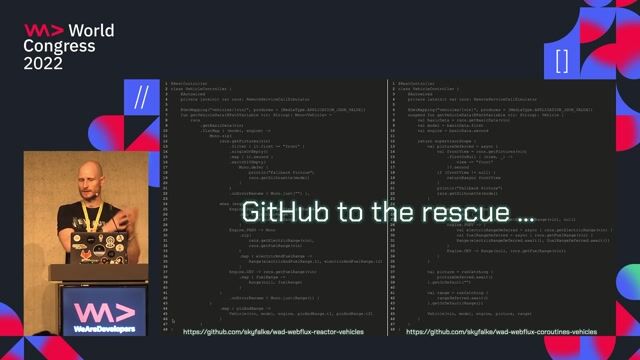
12:07 MIN
Migrating incrementally with the WebFlux sandwich pattern
Back(end) to the Future: Embracing the continuous Evolution of Infrastructure and Code
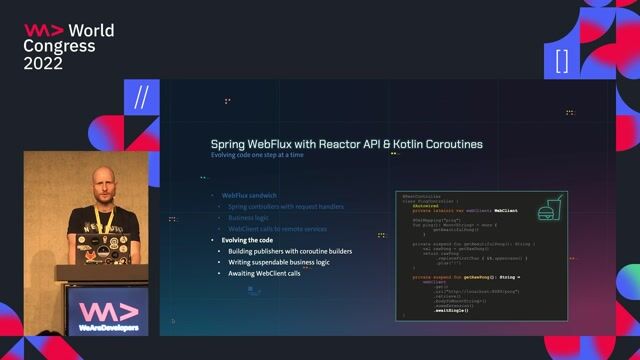
17:31 MIN
Comparing the performance and scalability of different approaches
Back(end) to the Future: Embracing the continuous Evolution of Infrastructure and Code

12:26 MIN
Inside the hybrid work model and developer platform
Coffee With Developers Michael Koitz
Featured Partners
Related Videos
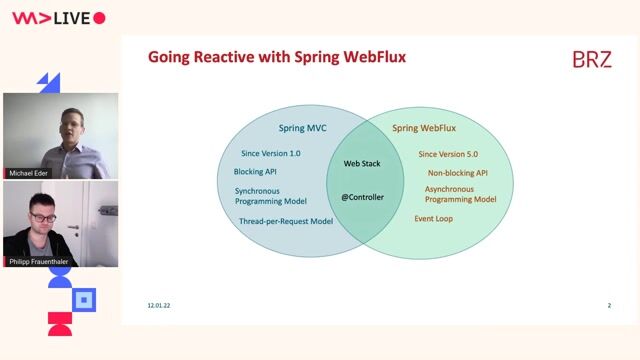 54:18
54:18Going reactive with Spring WebFlux
Michael Eder & Philipp Frauenthaler
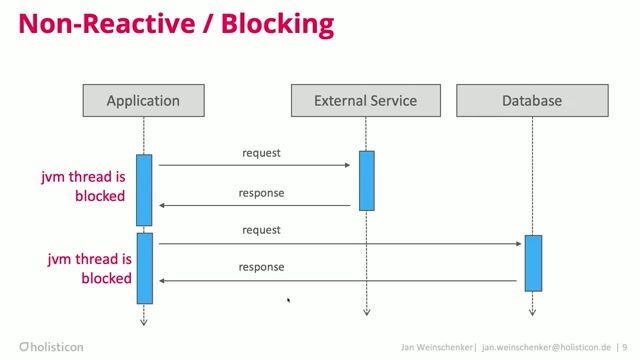 25:41
25:41Side-by-Side: Reactive vs non-reactive Java
Jan Weinschenker
 40:32
40:32Back(end) to the Future: Embracing the continuous Evolution of Infrastructure and Code
Matthias Falkenberg & Timo Knapp
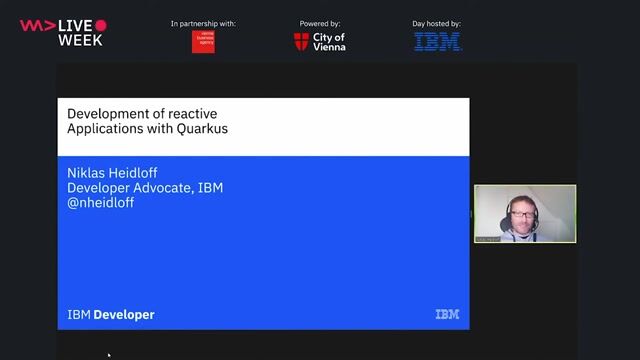 39:10
39:10Development of reactive applications with Quarkus
Niklas Heidloff
 58:05
58:05Our journey with Spring Boot in a microservice architecture
Michael Eder & Philipp Frauenthaler
 55:30
55:30Java 21: The Revolution of Virtual Threads - A Deep Dive
Christian Woerz
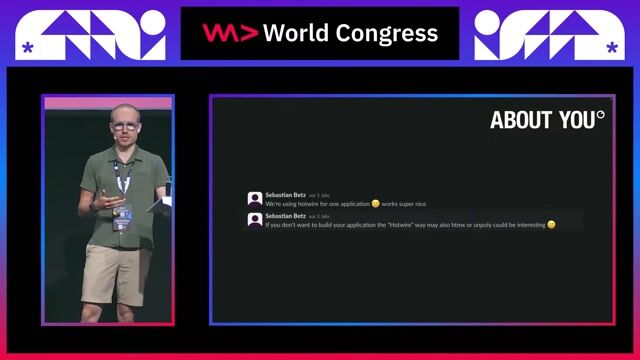 29:04
29:04Why HTMX is crushing React, Vue & Svelte.
Felix Eckhardt & Benedikt Stemmildt
 41:06
41:06Rethinking Reactive Architectures with GraphQL
David Leitner
From learning to earning
Jobs that call for the skills explored in this talk.



Senior Fullstack Engineer (all genders)
envelio
Köln, Germany
Remote
Senior
Python
JavaScript
Structured Query Language (SQL)




Senior Systems/DevOps Developer (f/m/d)
Bonial International GmbH
Berlin, Germany
Senior
Python
Terraform
Kubernetes
Elasticsearch
Amazon Web Services (AWS)

Backend Developer With Kotlin And Spring Boot - Consultant/Senior Consultant
Porsche Lizenz- und Handelsgesellschaft mbH & Co. KG
Senior
Azure
React
Kotlin
TypeScript

(Senior) Kotlin / Java Software Engineer - Banking Platform
Scalable GmbH
Remote
Senior
Java
REST
Python
Kotlin
+5